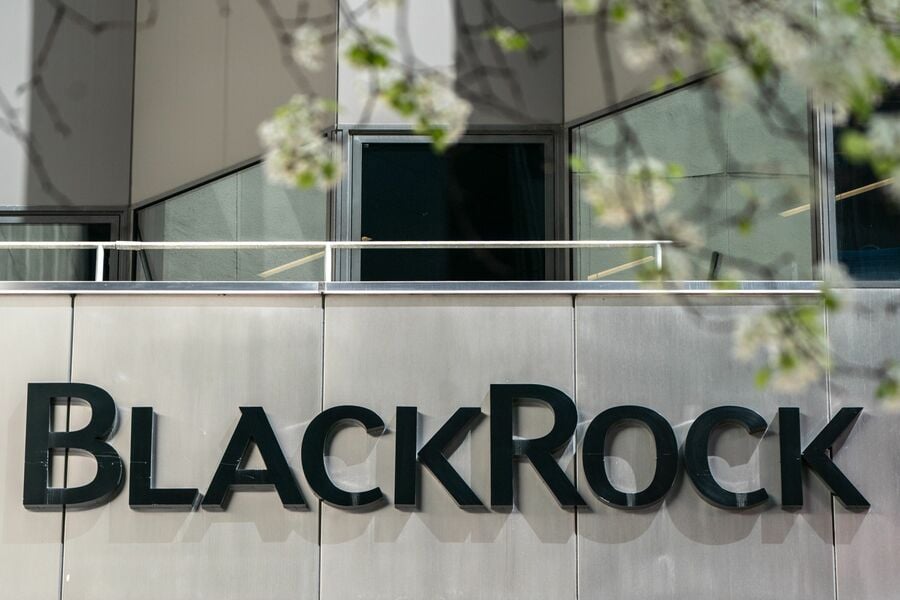

A once-listless corner of the ETF world just got a $4 billion endorsement.
After years in the shadow of Bitcoin, Ether – a cryptocurrency tied to the Ethereum blockchain — is suddenly on a tear as both retail and institutional traders pile into digital assets. A key beneficiary is iShares Ethereum Trust ETF, a fund that’s on track to post the fifth-largest inflow this month among the more than 4,000 ETFs trading in the US. It’s a remarkable feat for a product that launched just a year ago, underscoring crypto’s momentum.
The rally rests on familiar speculative fuel: a 50% jump in price, a regulatory green light and a growing belief in a tokenized future. None of this guarantees staying power, however. Momentum – not mainstream adoption of Ethereum’s underlying network – is driving the flows. But for now, the market is responding as if belief, alone, is enough.
“It’s the momentum driven by the market and euphoria that we’re seeing right now,” said Brian Stutland, portfolio manager at Equity Armor Investments, a firm that manages more than $160 million in assets and invests in cryptocurrencies. “Whether it’s justified, I’m not so certain, but Ethereum certainly has gotten some momentum.”
On Wall Street, Ethereum’s grand pitch that it could serve as the backbone for stablecoins, tokenized assets and programmable finance has long been treated more as a thought experiment than investable reality. Yet with billions of dollars in fresh ETF flows, companies adding Ether to their treasuries and Wall Street’s largest issuer putting its weight behind the trade, that blueprint is suddenly back on the table.
Having more than doubled since an early April low, Ether has outperformed Bitcoin’s 40% advance by more than 80 percentage points, and its July rally has put it on track for its biggest monthly outperformance versus the bigger token in four years. The surge accelerated after a mid-July stablecoin law, which backers say strengthens Ethereum’s role as a backbone for digital finance.
While Bitcoin ETFs have been a monster hit since their January debuts last year, Ether funds have been slower to gain traction — until now. The $11.3 billion BlackRock fund that trades under the ticker ETHA is the largest among the more than 20 Ether-focused products tracked by Bloomberg and saw the biggest July inflow among the entire bunch. The other products, including a $2.5 billion Ether ETF from Fidelity, saw net inflows of more than $1 billion. Still, more crypto funds could soon flood the US market thanks to a new regulatory framework, according to Bloomberg Intelligence. The Cboe BZX exchange this week filed a proposal to allow issuers to more easily — and quickly — list crypto exchange-traded products, and industry experts say other exchanges may follow suit.
Increased adoption of the token as a mainstay on company balance sheets is a trend that’s been gaining traction following the success of Michael Saylor’s Strategy buying Bitcoin for its treasury.
Bitcoin miner BitMine Immersion Technologies announced a $250 million private placement to fund an Ether treasury and named Fundstrat’s Tom Lee as chairman of its board. Meanwhile, other smaller imitators like SharpLink Gaming and Bit Digital have began accumulating loads of Ether by raising cash, crypto or both.
In July alone, Ether treasuries acquired around 876,000 tokens, or close to 1% of the total supply in circulation, according to a report by Bernstein. The strategy employed by these firms, however, comes with a key differentiator than that of Bitcoin treasuries.
“The growth of stablecoins and the opportunity around tokenization has brought attention to the Ethereum network, as the dominant blockchain network,” wrote Bernstein analysts including Gautam Chhugani and Mahika Sapra. “The growth of this internet financial economy, driven by the digital dollar and tokenized assets, will drive higher transactions and user growth on the Ethereum ecosystem.”
Equity Armor’s Stutland agrees that the “staking component” — which provides income — “makes it more attractive.”
“It’s definitely attractive for retail,” Stutland said. “The fact that you actually get income, it makes it feel more like a money market fund that people are typically used to when they hold their money in a savings account or a brokerage account.”
© 2025 Bloomberg L.P.

A Department of Labor proposal to scrap a regulatory provision under ERISA could create uncertainty for fiduciaries, the trade association argues.

"We continue to feel confident about our ability to capture 90%," LPL CEO Rich Steinmeier told analysts during the firm's 2nd quarter earnings call.

It's the mega-RIA firm's third $1B+ acquisition in just three months.

The deal marks a strategic entry into private asst markets for the ETP, ETF innovator.

Wall Street leaders propose ways to monetize the mortgage giants.
Orion's Tom Wilson on delivering coordinated, high-touch service in a world where returns alone no longer set you apart.
Barely a decade old, registered index-linked annuities have quickly surged in popularity, thanks to their unique blend of protection and growth potential—an appealing option for investors looking to chart a steadier course through today's choppy market waters, says Myles Lambert, Brighthouse Financial.
